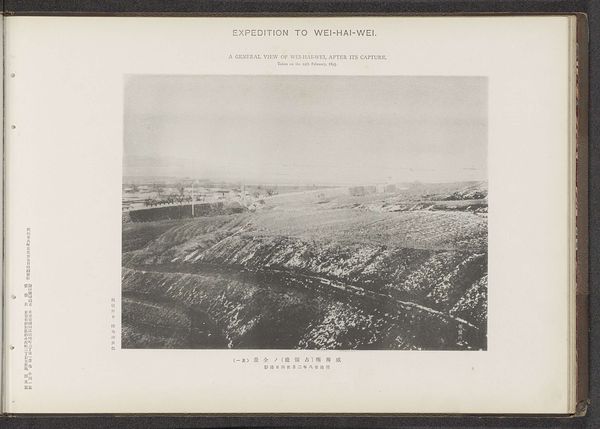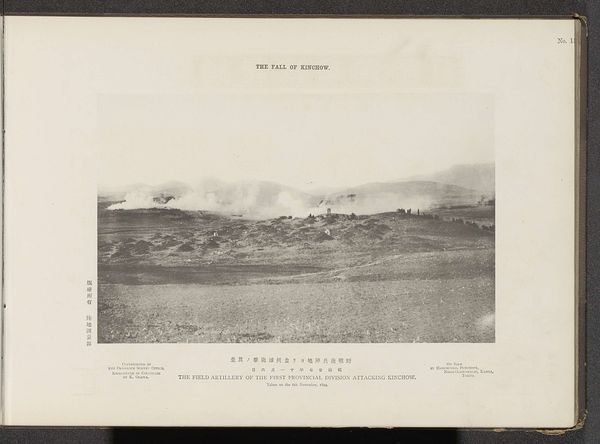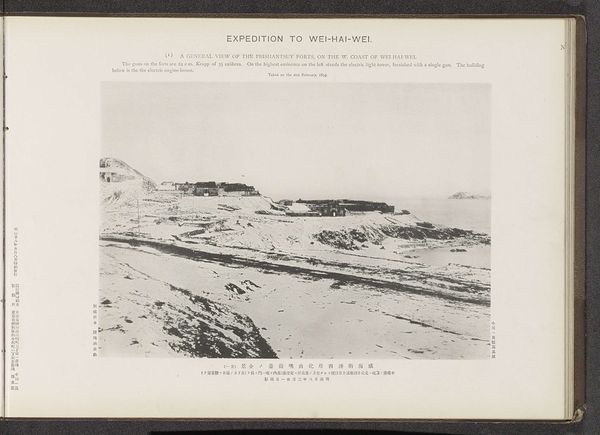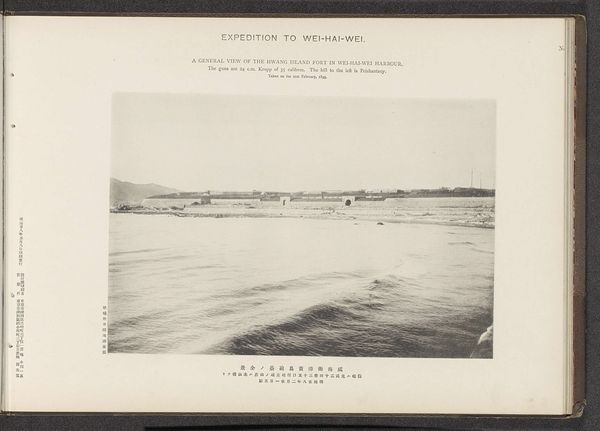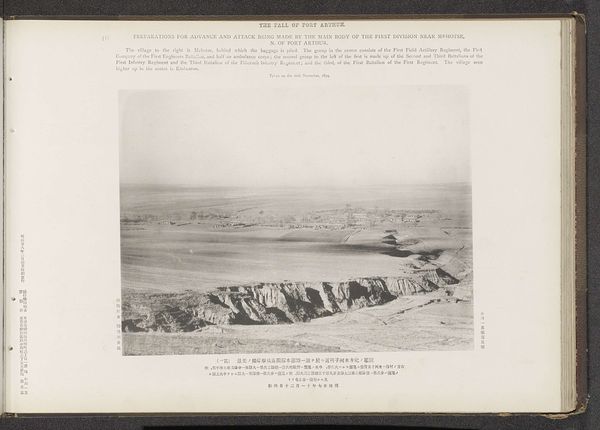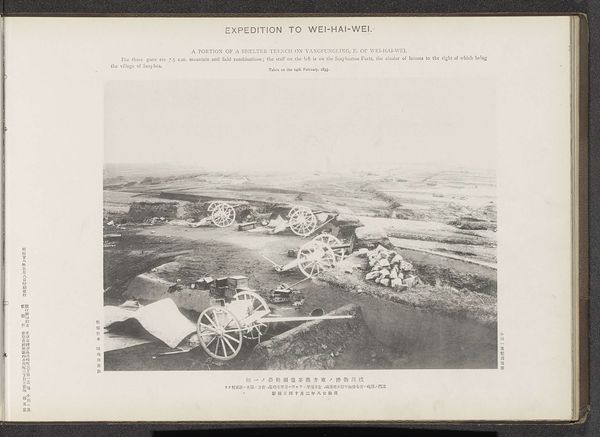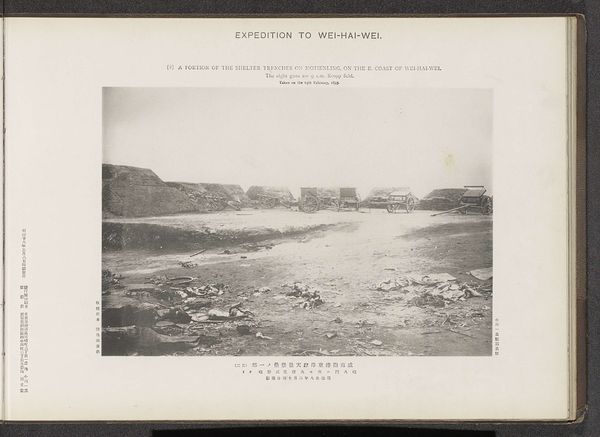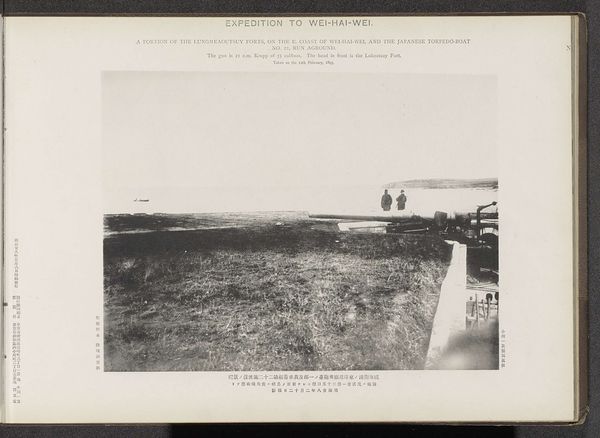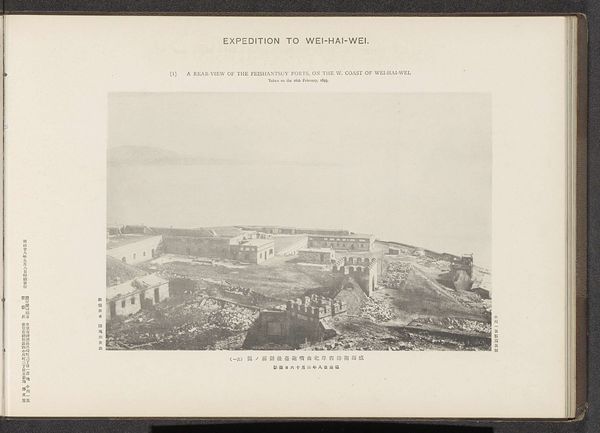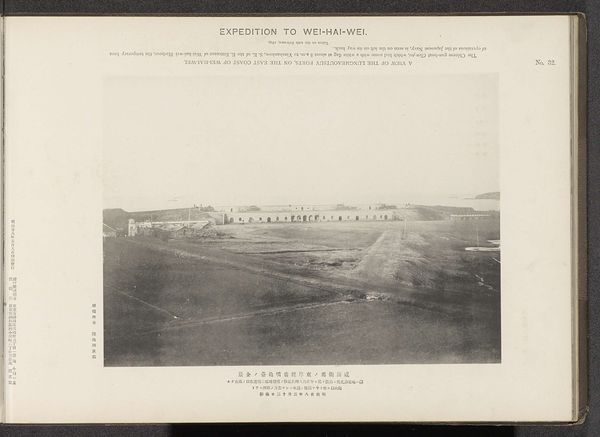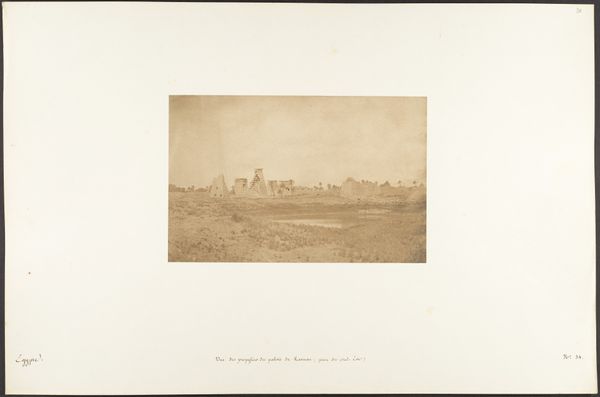
An attack from the captured Lukeutsuy fort, on the E. coast of Wei-Hai-Wei, upon the forts on Liukung Island and the S. E. head. Possibly 1895
0:00
0:00
print, photography
# print
#
landscape
#
photography
#
orientalism
#
realism
Dimensions: height 190 mm, width 275 mm
Copyright: Rijks Museum: Open Domain
Curator: Here we have a print from the Ordnance Survey Office, likely from 1895, titled "An attack from the captured Lukeutsuy fort, on the E. coast of Wei-Hai-Wei, upon the forts on Liukung Island and the S. E. head." Editor: Wow, that’s quite a mouthful. Looking at it, I immediately feel this immense sense of desolation, this quiet, impending dread hangs in the air, even though it depicts what must have been a loud, violent moment. It’s oddly muted, wouldn't you say? Curator: The muted tones absolutely enhance the visual narrative. What we're seeing is a photograph reproduced as a print, intended as a strategic document more than an aesthetic experience, perhaps. The style also echoes "Orientalism", it reduces an entire landscape to these stark components. War seen from above like some sort of geographical survey. Editor: Like viewing ant colonies in conflict, yeah, I feel that disconnect, that feeling of observing, dissecting, instead of experiencing the event. It almost neutralizes the human cost, the sheer desperation in a theatre of war. It’s not glorious; it’s methodical. Curator: The realism attempts to capture that. Note how the details aren't romanticized, rather a document meant for military intelligence and to portray geopolitical circumstances from the view point of a surveying authority. But despite this aim, those visual elements – the smoke, the sharp contrast against muted hills – speaks to deeper emotions. The image reveals this historical narrative through this complex exchange between observer and subject. Editor: Indeed. It strikes me how photographic realism unintentionally communicates profound historical insight. It exposes this strange, objective-yet-emotionally charged record, beyond any official interpretation, you know? Curator: It invites a look into cultural memory, offering not just a depiction of conflict but also inviting an exploration of our present engagement with these moments frozen in time. The map and landscape traditions provide context, a somber look back into past conflicts. Editor: A complex emotional engagement indeed. I am walking away with this deep sense of history being layered, constantly negotiated. What began for me as dread evolved into this contemplation. Curator: Absolutely. I came here with an anticipation of an orderly strategic layout but now have the impression of humanity in times of enormous stress.
Comments
No comments
Be the first to comment and join the conversation on the ultimate creative platform.


